NINETY-THIRD SEASON
Sunday, April 7, 2024, at 3:00
Chamber Music Series
YO-YO MA Cello
KATHRYN STOTT Piano
FAURÉ Berceuse, Op. 16
DVOŘÁK Songs My Mother Taught Me from Gypsy Songs, Op. 55
S. ASSAD Menino
BOULANGER Cantique
FAURÉ
SHOSTAKOVICH
Papillon, Op. 77
Sonata for Cello and Piano in D Minor, Op. 40
Allegro non troppo Allegro Largo Allegro
INTERMISSION
PÄRT
FRANCK
Spiegel im Spiegel
Violin Sonata in A Major Allegro ben moderato Allegro
Recitativo—Fantasia: Ben moderato—Molto lento Allegretto poco mosso
This performance is generously sponsored by The Negaunee Foundation and Zell Family Foundation.
The Chicago Symphony Orchestra Association thanks The Negaunee Foundation and Zell Family Foundation for generously sponsoring this performance.
2

Dear Friends,
Music is about connection and exploration, and Kathy Stott has been my constant partner in both for many decades, sustaining me as an artist and as a human being. Among Kathy’s many gifts is her ability to craft a concert program that brings performers and audience on a shared journey, creating the unbroken circle of content, communication, and reception that can turn the concert hall into a communal space, at once sacred and secular.
It is a special honor to share this space with you today—this is a program of particular significance: Kathy will retire from her extraordinary career as a performer at the end of this year, and she designed this program knowing it would likely be the last we would perform together.
I hope you will listen to today’s concert with this in mind, hearing in its whole a celebration of the time we have spent together and in each piece, a glimpse of the explorations we have shared. Kathy and I believe that music lives through relationships: among performers, between students and teachers, across generations. The opening suite is testament to this, to the fact that we musicians stand on the shoulders of those who came before us, and we can only hope that ours will sustain those who come after.
My path and Kathy’s intersect through one teacher, Nadia Boulanger. Nadia taught Kathy in her early years at the Menuhin School, south of London, and Nadia’s student, Luise Vosgerchian, was my professor in college. Professor Vosgerchian liberated me from being a neurotic instrumentalist tethered to perfection and taught me how to approach music with perspective, with humanity. It feels right that Nadia Boulanger’s “Cantique”—a song of praise—arrives two-thirds of the way through the suite at its golden mean. “Cantique” anchors an opening that contains our shared musical world, from Dvořák’s own homage to the transmission of music across the generations to the creation of Sérgio Assad, one of the many friends Kathy and I met in our immersion in the music of Brazil. It is a microcosm fittingly framed by the composer who has been with Kathy since the very beginning, Gabriel Fauré, friend and mentor to Nadia Boulanger!
CSO.ORG 3
A NOTE FROM YO-YO MA
The three pieces that follow the opening suite contain worlds of meaning for us. In the Shostakovich, we hear the pursuit of truth against all odds; in Arvo Pärt’s Spiegel im Spiegel simplicity and complexity coexist to create a portrait of the universe; and in César Franck’s sonata, composed as a wedding gift for the violinist Eugène Ysaÿe, we are given the immortal gift of love. All three are, for us, reminders of our humanity, as needed today as ever.
When I reflect on my decades of collaboration with Kathy, I realize that they have been so sustaining in part because she is fiercely grounded yet always open to receiving the world as it is. This program reflects this, her clarity, her curiosity, and her boundless love of music.
I want to leave you with the opening lyrics of Nadia Boulanger’s “Cantique.” They are words that you won’t hear in our performance, lines from a poem by the Belgian poet Maurice Maeterlinck:
A toute âme qui pleure
A tout peché qui passe
J’ouvre aux seins des étoiles
Mes mains pleins de graces.
To every crying soul,
To each passing sin, I open to the bosom of the stars
My hands full of grace.
I write this note with the deepest affection and greatest admiration, trying to reconcile a spirit of huge celebration with real sadness and, above all, gratitude.
Yo-Yo Ma
4
COMMENTS by Richard E. Rodda
GABRIEL FAURÉ
Born May 12, 1845; Pamiers, Ariège, France Died November 14, 1924; Paris, France
Berceuse, Op. 16

COMPOSED 1879
Fauré composed his vernal “Berceuse” for violin and piano in 1879 as a sort of encore-pendant to the Violin Sonata no. 1, his first important chamber work, which had been successfully premiered in Paris on January 27, 1877. He introduced the “Berceuse” with the young Belgian violinist (and recent Paris Conservatoire graduate) Ovide Musin on his important concert at the Société Nationale de Musique on February 14, 1880, when the Piano Quartet no. 1 also received its first performance;
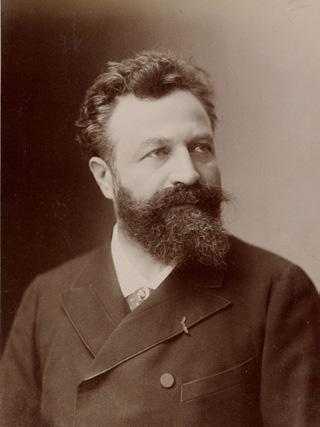
Musin filled out the program with the violin sonata. Musin introduced Fauré’s orchestral version of the “Berceuse” at Edouard Colonne’s concert on April 24. Musin’s brief but intense involvement with Fauré also included the premiere of the first two movements of a violin concerto (eventually abandoned) at Colonne’s concert of April 12, 1880. In addition to championing new music in Paris during those years, Musin toured as far away as New Zealand before settling in New York in 1883, where he performed and taught until his death in 1929. The “Berceuse” (Lullaby) was among Fauré’s first published works and one of his most popular, appearing in a wide range of transcriptions and on many recordings.
from top: Gabriel Fauré, oil portrait of the composer painted by John Singer Sargent (1856–1925), ca. 1889 | Edouard Colonne, photographed by Nadar (Gaspard-Félix Tournachon, 1820–1910). Bibliothèque nationale de France
CSO.ORG 5
ANTONÍN DVOŘÁK
Born September 8, 1841; Nelahozeves, Bohemia (now Czech Republic) Died May 1, 1904; Prague, Bohemia
Songs My Mother Taught Me from Gypsy Songs, Op. 55

COMPOSED 1880
Dvořák composed the Gypsy Songs in January 1880 for Prague-born Gustav Walter, the leading tenor of the Vienna Opera for the three decades after 1856 and a renowned specialist in lieder recitals and the operas of Mozart and Wagner; Walter premiered the Gypsy Songs, in German, at his recital in Vienna on February 4, 1881. The words and spirit of these pieces came from the collection of original poems titled Gypsy Melodies that Adolf Heyduk (1835–1923), a professor at Písek, fifty miles south of Prague, had published in 1859. (Dvořák took a song for male chorus that he had written in 1877 to

Heyduk’s “I Am a Fiddler” as the basis for his Symphonic Variations.) Heyduk’s poems were inspired by the traditional verses of the Gypsies of Slovakia, a mountainous land then considered by the more westernized Bohemians to be wilder and more exotic than their own, and they drew from Dvořák settings in which, wrote Alec Robertson in his study of the composer, “he reached his highest pinnacle as a songwriter. Everything is in place here.” Indeed, the fourth number of the set, widely known as “Songs My Mother Taught Me,” became one of Dvořák’s most famous and best-loved melodies.
When my mother taught me/the songs she loved dearly,/tears would flow from her eyes./Now my eyes weep as well/as these old strains my own child is learning!
6 COMMENTS
from top: Antonín Dvořák, ca. 1882 | Adolf Heyduk, portrait by Jan Vilímek (1860–1938)
SÉRGIO ASSAD
Born December 26, 1952; Mococa, São Paulo, Brazil
Menino
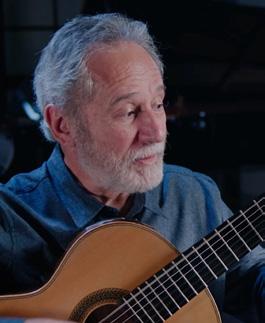
COMPOSED 2003
Sérgio Assad, one of the world’s preeminent guitar performers and composers, was born in 1952 into a musical family in Mococa, São Paulo, Brazil. With his brother, Odair, he has performed in concert since 1979 around the world and in collaboration with such celebrated artists as Yo-Yo Ma, Nadja Salerno-Sonnenberg, Paquito D’Rivera, Gidon Kremer, and Dawn Upshaw, as well as his gifted daughter, composer, pianist, vocalist, and educator, Clarice Assad. Sérgio Assad studied with Monina Távora, a disciple of Andrés Segovia, and began composing and arranging works for his instrument when he was fourteen. He subsequently studied conducting and composition at the Escola Nacional de Musica in Rio de Janeiro and took private lessons from the noted Brazilian composition teacher Esther Scliar. Assad has conducted
master classes around the world and taught at the Conservatoire Royal de Musique in Mons, Belgium, and Chicago College of Performing Arts at Roosevelt University. He is currently on the faculty at the San Francisco Conservatory of Music. In addition to many transcriptions and adaptations, Sérgio Assad has composed numerous original works, including solo guitar pieces, concertos, ballets, and music for the Japanese film Natsu No Niwa (The Summer Garden), directed by Shinji Soumai. He holds an honorary degree from the University of Arizona and has eight Grammy nominations and four Latin Grammy awards, most recently for Best Contemporary Classical Composition (Anido’s Portrait) in 2022.
Sérgio Assad composed the lullabylike Menino (Portuguese for “little one”) in 2003 for the Assad Duo and cellist Yo-Yo Ma, who introduced it with them in concert in Brazil and recorded it on the Sony Classics album Obrigado Brazil (Thank You, Brazil).
CSO.ORG 7 COMMENTS
above: Sérgio Assad
NADIA BOULANGER
Born September 16, 1887; Paris, France
Died October 22, 1979; Paris, France
Cantique

COMPOSED 1909
Nadia Boulanger was born into a musically sophisticated family. Her father won the Prix de Rome in 1835, became a successful opera composer in Paris and a teacher of singing at the Conservatory, and was awarded the Legion of Honor in 1870; Gounod, Fauré, Massenet, and Saint-Saëns were frequent visitors to their home. Nadia entered the Paris Conservatory when she was ten; in 1904, she won first prizes in harmony, counterpoint, organ, fugue, and piano accompaniment. She composed industriously and performed as a pianist and organist during the following years but abandoned composition in 1922 when she discovered her true genius in teaching. She taught at the Paris Conservatory but began her incomparable impact on twentieth-century music when she joined the faculty of the American Conservatory at Fontainebleau in 1921. Aaron Copland and Virgil Thomson were her first
American students, and then literally hundreds more came for the next half century, from Piston, Carter, and Harris to Diamond, Bernstein, Piazzolla, and Glass. Among Boulanger’s many honors were the Order of Saint-Charles of the Principality of Monaco, Order of the Crown of Belgium, honorary doctorates from Oxford and Harvard, an honorary fellowship in the Royal College of Music, membership in the American Academy of Arts and Sciences, and nomination as a Grand Officer of the Legion of Honor.
Boulanger held as early-twentiethcentury models for her students the works of Ravel, Debussy, and Stravinsky, but her own compositions, all completed before she turned thirty-five, are most heavily indebted to the subtle idiom of her teacher Gabriel Fauré. The text for “Cantique,” one of Boulanger’s two settings of verses by Maurice Maeterlinck, is from the play “Sister Beatrice” (1900), based on an old English legend about a fourteenth-century nun who runs away from her convent with a suitor. He arrives as she is praying for forgiveness before a statue of the Virgin near
8 COMMENTS
this page: Nadia Boulanger, ca. 1910. Bibliothèque nationale de France | opposite page: Igor Stravinsky and Nadia Boulanger, ca. 1937. Bibliothèque nationale de France
the door she has been tasked to guard. He orders her to remove her veil and simple clothes and dress in the jewels and costly garments he has brought. They ride off together, but he deserts her soon thereafter, and she lives in misery for the next twenty-five years. In her absence, the statue of the Virgin comes to life. Dressed in Beatrice’s discarded veil and clothes, she convincingly assumes her identity, receiving the blame from the sisters for the apparent theft of the statue. The transformed Virgin sings a hymn—a cantique—of pardon for the girl whose love led her astray: À toute
âme qui pleure (For every soul that cries).
When Beatrice returns to the convent after her ordeal, the Virgin assumes her former solid state; Beatrice again dresses in the modest clothes of a nun, and the sisters declare a miracle for the reappearance of the statue that Beatrice has apparently wrought.

For every soul that cries,/For every sin that passes,/I open within the stars/My hands full of graces./There is no sin which lasts/When love has spoken;/There is no soul that dies/When love has cried./And if love goes astray/On paths here below,/ Her tears find me/And do not get lost.
CSO.ORG 9 COMMENTS
GABRIEL FAURÉ
Papillon, Op. 77

COMPOSED around 1885
In 1880 Fauré composed his “Elegy” for cello and piano for Jules Loëb, professor of cello at the Paris Conservatory, who first played it publicly at the Société Nationale in Paris on December 15, 1883. (The work had been previously heard at a private salon in Camille Saint-Saëns’s home in Paris in June 1880.) The “Elegy” was
DMITRI SHOSTAKOVICH
well received, published in 1885, and later orchestrated. Papillon (Butterfly) seems to have been written at about the same time as a companion piece for it at the request of Fauré’s publisher, Hamelle, but not published until 1898. In lighthearted contrast to the poignant mood of the “Elegy,” Papillon is a sort of French “Flight of the Bumblebee,” a breathless ride twice interrupted by a lyrical episode that allows some respite for performer, listener, and lepidopteran aviator alike.
Born September 25, 1906; St. Petersburg, Russia
Died August 9, 1975; Moscow, Russia
Sonata for Cello and Piano in D Minor, Op. 40

COMPOSED 1934
When Shostakovich undertook the composition of a cello sonata for his friend and supporter Viktor Kubatsky during the early months of 1934, he had just vaulted to the forefront of Soviet music on the enormous success of his opera Lady Macbeth of
Mtsensk. Audiences in Moscow and Leningrad filled every available seat at the work’s performances for nearly two years and confirmed the words of one critic that the opera “could only have been written by a Soviet composer brought up in the best traditions of Soviet culture” and of others that it was “a triumph for Soviet music” and “a brilliant opera.” During one period in 1935, Lady Macbeth played in three Moscow theaters simultaneously. The
10 COMMENTS
condemnation of the opera ordered by Stalin, who was enraged when he experienced for himself the work’s powerful modernity and lurid depictions of murder and adultery late in 1935, would not come until the following year.
The first important work Shostakovich composed after the premiere of Lady Macbeth in Leningrad on January 22, 1934, was his Sonata for Cello and Piano in D minor, begun in Moscow and completed during a holiday in the Crimea just before his twenty-eighth birthday. (Solomon Volkov, the Russian musicologist who transcribed and published Testimony, the composer’s memoirs, claimed that much of the work was sketched in Shostakovich’s empty apartment during two sleepless nights after he had quarreled with his wife, who stomped off to Leningrad.)
The sonata is built on a large, nearly symphonic formal plan and exhibits the juxtaposition of lyricism and acidulousness that characterizes Shostakovich’s best compositions. The two lyrical flights that serve as the first and second
themes of the opening movement’s exposition are among Shostakovich’s most unabashedly romantic melodic inspirations. The center of the movement, however, is much concerned with a somewhat premonitory repeated-note rhythmic figure, which the piano posits as a challenge to the songful nature of the cello’s part. The order of the earlier themes is reversed upon their return in the recapitulation, and the movement ends with a rumbling ghost of the repeated-note motif from the development section. The second movement is a volatile scherzo whose central trio is marked by wave-form cello arpeggios in icy harmonics. The Largo is a deeply felt lament, solemn, almost tragic in its emotion, and darkly introspective in its harmony and instrumental coloring. The finale is a typically Shostakovian blending of the traditional in its brilliant, energetic nature, clear texture, and rondo form, and the modern, in its cheeky main theme and acerbic, nose-thumbing chordal constructions.
opposite page, from top: Gabriel Fauré, portrait by Eugène Pirou (1841–1909), ca. 1905. Bibliothèque nationale de France | Dmitri Shostakovich, portrait published in the Red Star, April 12, 1942. State Catalog of the Museum Fund of the Russian Federation
CSO.ORG 11 COMMENTS
ARVO PÄRT
September 11, 1935; Paide, Estonia
Spiegel im Spiegel
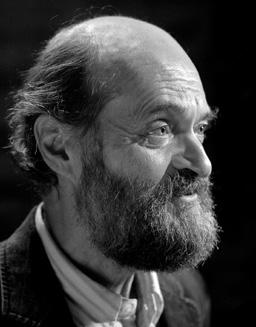
COMPOSED 1978
Arvo Pärt graduated from the Tallinn Conservatory in 1963 while working as a recording director in the music division of the Estonian Radio. A year before leaving the conservatory, he won first prize in the All-Union Young Composers’ Competition for a children’s cantata and an oratorio. In 1980 he immigrated to Vienna, where he took Austrian citizenship; he moved to Berlin in 1982 and recently returned to Tallinn. Pärt’s many distinctions include the Artistic Award of the Estonian Society in Stockholm, honorary memberships in the Royal Swedish Academy of Music, American Academy of Arts and Letters, and Belgium’s Royal Academy of Arts, seven Grammy nominations, and recognition as a Commander of the Order of Arts and Letters by the French Ministry of Culture.
In his early works, Pärt explored the influences of the Soviet music of Prokofiev and Shostakovich, the serial principles of Schoenberg, and the techniques of collage and quotation, but in the late 1960s, he abandoned creative work for several years to devote himself
to the study of such Medieval and Renaissance composers as Machaut, Ockeghem, Obrecht, and Josquin. Guided by the spirit and method of those ancient masters, Pärt developed a distinctive idiom that utilizes quiet dynamics, rhythmic stasis, and open-interval and triadic harmonies to create a mood of mystical introspection reflecting the composer’s personal piety.
Spiegel im Spiegel (Mirror in the Mirror), composed shortly before Pärt left Estonia, is a visionary lullaby, music rapt out of quotidian time. It moves at an unvarying pace and is built from the simplest of musical materials: a continuous broken-chord pattern, subject to only the most subtle harmonic shifts, in the right hand of the piano; bell tones, deep in the bass and high in the treble, for the left hand; and long-held notes moving by fundamental intervals in the violin. There is not a single chromatic note in the entire score. The title of Spiegel im Spiegel suggests the additive growth of its violin line, which moves progressively from three initial notes—one above and one below the pitch A, the work’s gravitational center—to ultimately encompass complete scale sequences, much as facing mirrors create a perpetually expanding visual image.
12 COMMENTS
CÉSAR FRANCK
Born December 10, 1822; Liège, Belgium
Died November 8, 1890; Paris, France
Violin Sonata in A Major
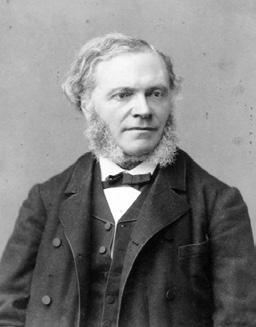
COMPOSED 1886
Franck first considered writing a violin sonata in 1859, when he offered to compose such a piece for Cosima von Bülow (née Liszt, later Wagner) in appreciation for some kind things she had said about his vocal music. He was, however, just then thoroughly absorbed with his new position as organist at Sainte-Clotilde and unable to compose anything that year except a short organ piece and a hymn. (His application to his duties had its reward—he occupied the prestigious post at SainteClotilde until his death thirty-one years later.) No evidence of any work on the proposed sonata for Cosima has ever come to light, and it was not until twenty years later that he first entered the realm of chamber music with his Piano Quintet of 1879. Franck’s next foray

into the chamber genres came seven years after the quintet with his Sonata for Violin and Piano in A major, which was composed as a wedding gift for his friend and Belgian compatriot, the dazzling virtuoso Eugene Ysaÿe, who had been living in Paris since 1883 and befriending most of the leading French musicians; Ysaÿe first played the piece privately at the marriage ceremony on September 28, 1886. The formal premiere was given by Ysaÿe and pianist Léontine Bordes-Pène at the Musée moderne de peinture in Brussels on December 16, 1886.
The sonata opens in a mood of twilit tenderness with a main theme built largely from rising and falling thirds, an intervallic germ from which later thematic material is derived. The piano alone plays the second theme, a broad melody given above an arpeggiated accompaniment. The movement’s short central section, hardly a true development at all, consists only of a modified version of the main theme played in dialogue. The
CSO.ORG 13 COMMENTS
opposite page: Arvo Pärt, photo by Kaupo Kikkas | this page, from top: César Franck, as photographed by Pierre Petit (1832–1909) | Eugène Ysaÿe in Russia, 1883. Bibliothèque royale de Belgique
recapitulation of the principal and secondary subjects (dolcissima . . . semper dolcissima . . . molto dolcissima “sweetly . . . always sweetly . . . very sweetly,” instructs the score) rounds out the form of the movement.
The quick-tempo second movement fulfills the function of a scherzo, though its music is more in the nature of an impetuous intermezzo. Two strains alternate to produce the movement’s form: one (scherzo) is anxious and unsettled; the other (trio) is subdued and rhapsodic. The third movement (Recitativo—Fantasia) begins with a cyclical reference to the third-based germ motif that opened the sonata. The long, winding line in the Recitativo is succeeded by the Grecian purity of the following Fantasia.
The main theme of the finale is so richly lyrical that its rigorous treatment
as a precise canon at the octave is charming rather than pedantic. When each instrument eventually takes off on its own path, it is so that the piano may recall the chaste melody of the preceding Fantasia. Other reminiscences are woven into the movement—a hint of the third-based germ motif in one episode, another phrase from the Fantasia— which unfolds as a free rondo around the reiterations of its main theme. The sonata is brought to a stirring climax by a grand motif that strides across the closing measures in heroic stepwise motion.
Richard E. Rodda, a former faculty member at Case Western Reserve University and the Cleveland Institute of Music, provides program notes for many American orchestras, concert series, and festivals.
14 COMMENTS
PROFILES
Yo-Yo Ma Cello
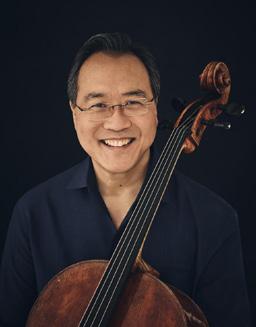
Yo-Yo Ma’s multifaceted career is testament to his belief in culture’s power to generate trust and understanding. Whether performing new or familiar works for cello, bringing communities together to explore culture’s role in society, or engaging unexpected musical forms, Yo-Yo Ma strives to foster connections that stimulate the imagination and reinforce our humanity.
Most recently, Yo-Yo Ma began Our Common Nature, a cultural journey to celebrate the ways nature can reunite us in pursuit of a shared future. Our Common Nature follows the Bach Project, a thirty-six-community, six-continent tour of J.S. Bach’s cello suites paired with local cultural programming. Both endeavors reflect Ma’s lifelong commitment to stretching the boundaries of genre and tradition to understand how music helps us imagine and build a stronger society.
Ma advocates for a future guided by humanity, trust, and understanding. Among his many roles, he is a United Nations Messenger of Peace, the first artist ever appointed to the World Economic Forum’s board of trustees, a member of the board of Nia Tero, the U.S.-based nonprofit working in solidarity with Indigenous peoples and movements worldwide, and the founder of the global music collective Silkroad.
Yo-Yo Ma’s discography of more
PHOTO BY JASON BELL
than 120 albums (including nineteen Grammy Award winners) ranges from iconic renditions of the Western classical canon to recordings that defy categorization, such as Hush with Bobby McFerrin and the Goat Rodeo Sessions with Stuart Duncan, Edgar Meyer, and Chris Thile. Ma’s recent releases include Six Evolutions, his third recording of Bach’s cello suites, and Songs of Comfort and Hope, created and recorded with pianist Kathryn Stott in response to the COVID-19 pandemic. His latest album, Beethoven for Three: Symphony No. 6 (Pastorale) and Op. 1, No. 3, is the second in a new series of works by Beethoven with pianist Emanuel Ax and violinist Leonidas Kavakos.
Yo-Yo Ma was born in 1955 to Chinese parents living in Paris. He began studying the cello with his father at age four, and three years later moved with his family to New York City, where he continued his cello studies at the Juilliard School before pursuing a liberal arts education at Harvard. He has received numerous awards, including the Avery Fisher Prize (1978), the National Medal of the Arts (2001), the Presidential Medal of Freedom (2010), Kennedy Center Honors (2011), the Polar Music Prize (2012), and the Birgit Nilsson Prize (2022). He has performed for nine American presidents, most recently on the occasion of President Biden’s inauguration.
Yo-Yo Ma and his wife have two children. He plays three instruments: a 2003 cello made by Moes & Moes, a 1733 Montagnana cello from Venice, and the 1712 “Davidoff” Stradivarius.
CSO.ORG 15
Kathryn Stott Piano

At the age of five, I made friends with the upright piano in our living room. That was the beginning of my musical journey, one which continues as you read this. It would appear that my initial progress was rapid, and by the age of eight, I found myself at a boarding school for young musicians, the Yehudi Menuhin School. During my studies there, it is now clear to me that I was heavily influenced by two occasional visitors to the school: Nadia Boulanger and Vlado Perlmuter. From them, my great passion for French music was ignited, and Faure, in particular, has remained the musical love of my life.
Further studies at the Royal College of Music in London led me very abruptly into the life of a professional musician via the Leeds International Piano Competition. It remains the steepest learning curve I have ever experienced. After a rollercoaster three years, I realized that I needed to reconnect with chamber music in a bid to feel more connected to other musicians, and after all, this had played an important part in my musical existence since I was a child.
When, quite by chance, I met Yo-Yo Ma in 1978, it turned out to be one of the most fortuitous moments of my life. Since 1985 we have enjoyed a collaboration that has taken us to so many fascinating parts of the world and led
to musical adventures with musicians who shared so much from their own traditions. I have always considered us to be intrepid musical explorers on our own individual paths but with an incredible bond that unites us on the creative highway.
Most recently, I was the artistic director of the Australian Festival of Chamber Music, and working with artists on such a huge geographical scale was fascinating. A little closer to home, I am presently the curator of the 2023 Sheffield Chamber Music Festival, and with this come equally exciting fresh creations.
There are too many highlights in my career to mention. Yes, it was a thrill to perform at the Last Night of the Proms to millions around the world, but equally, it was a massive thrill to have lit up twenty small faces in an inner-city school while they jumped up and down to energetic piano music! Working with young musicians is something I feel passionate about, and I presently teach at the Royal Northern College of Music in Manchester. I have also had some truly exciting music written for me and enjoyed a particularly close collaboration with composer Graham Fitkin. What an unbelievable privilege it is to be immersed in a language that has no boundaries and has allowed me to share musical stories on a global scale; that little upright piano set me on quite a path! Talking of paths—I have also been found trekking in Nepal, Costa Rica, Bhutan, or walking my spaniel Archie on the Yorkshire Moors. The journey continues.
PHOTO BY JACQUI FERRY
PROFILES















